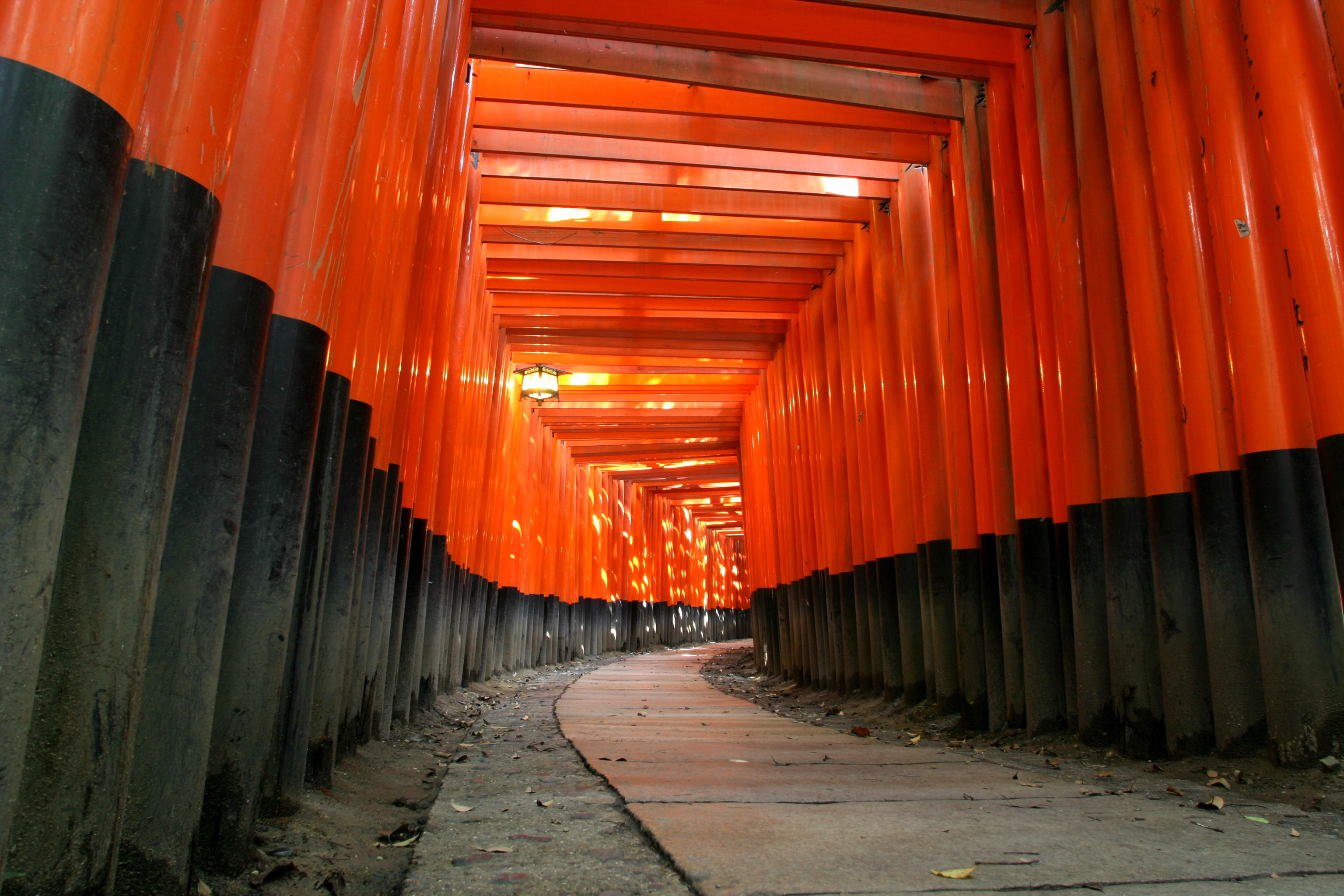

Senbon-torii / Fushimi Inari Taisha
The “Senbon-torii” line the approach to the Okusha Shrine of Fushimi Inari Taisha, creating a tunnel-like landscape of red torii. The history of Senbon-torii is closely connected to that of Fushimi Inari-taisha itself. Fushimi Inari Taisha was founded in the 8th century and developed as a shrine dedicated to Inari, the god of agriculture. As the shrine became a place of worship, the custom of dedicating torii gates to the deity arose as people wished for prosperous business and a good harvest. Dedicating torii gates is considered an expression of gratitude for the fulfillment of one's wishes and an expression of prayer for new wishes. Especially in the Edo period, commerce and economy developed, and merchants began to dedicate torii gates in competition with each other. Thus, over several hundred years of continuous dedication, the long tunnels of torii gates that we see today were formed. The number of toriis continues to increase, making the “Senbon-torii” a perfect description of the scenery. The vermilion color of “Senbon-torii” is said to symbolize holiness and the power to ward off evil. Each torii is marked with the name of the person who dedicated it and the date of dedication, each expressing a specific wish or feeling of gratitude. In this way, “Senbon-torii” is more than just a beautiful sight; it symbolizes the long history and faith of many people.